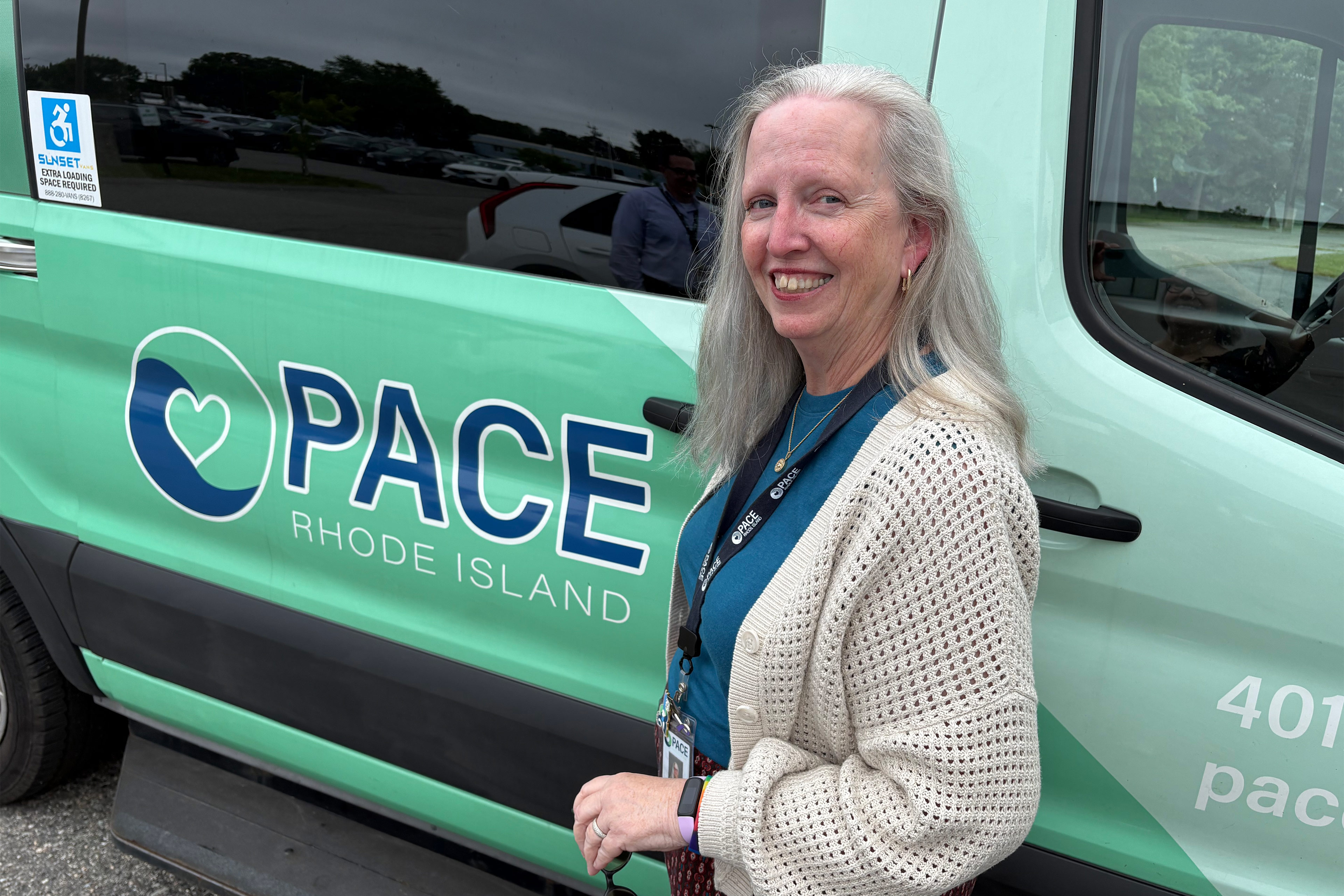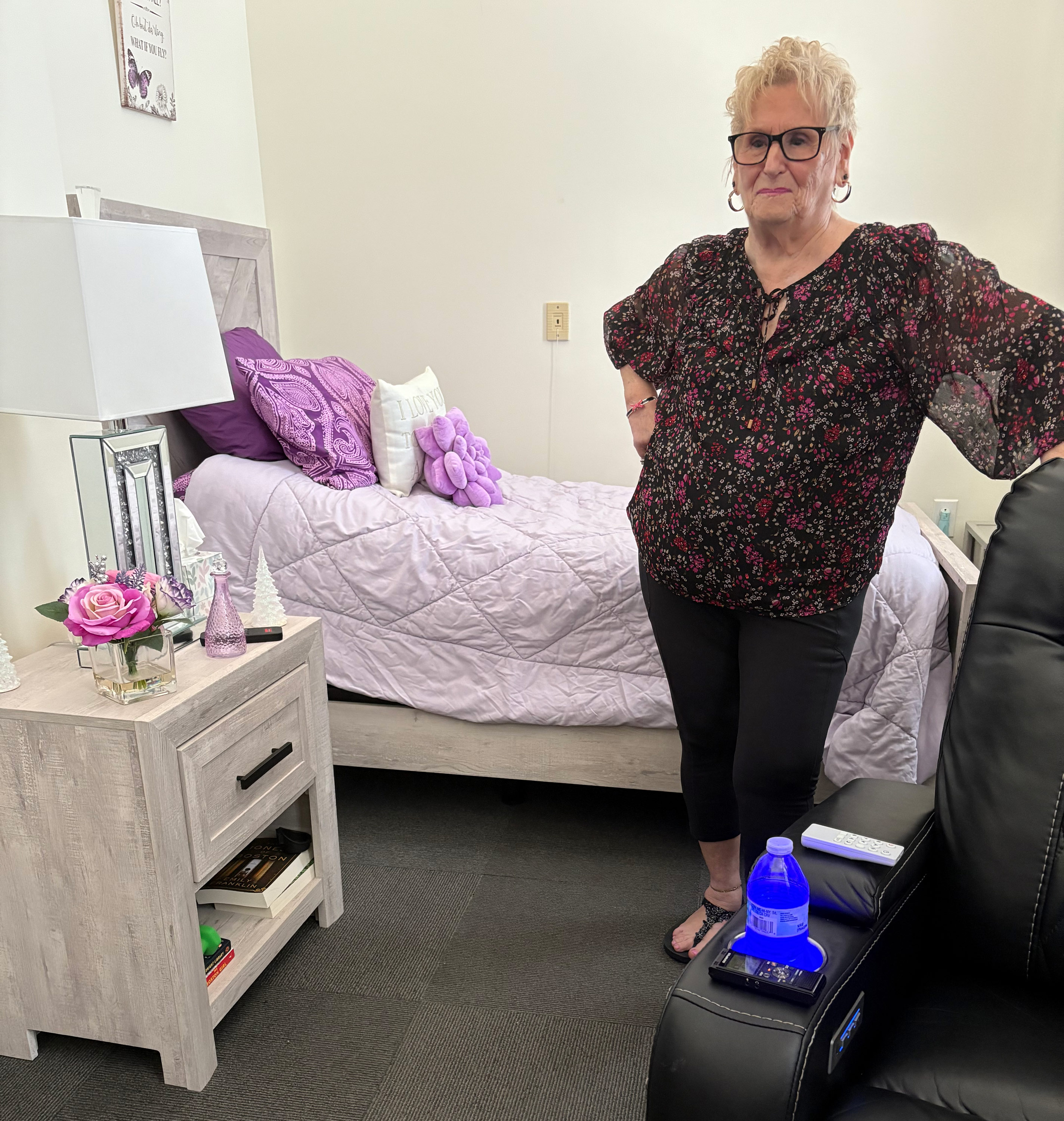BRISTOL, R.I. — At age 82, Roberta Rabinovitz realized she had no place to go. A widow, she had misplaced each her daughters to most cancers, after residing with one after which the opposite, nursing them till their deaths. Then she moved in together with her brother in Florida, till he additionally died.
And so final fall, whereas recovering from lung most cancers, Rabinovitz ended up at her grandson’s dwelling in Burrillville, Rhode Island, the place she slept on the sofa and struggled to navigate the steep staircase to the bathe. That wasn’t sustainable, and with residence rents out of attain, Rabinovitz joined the rising inhabitants of older Individuals not sure of the place to put their heads at evening.
However Rabinovitz was lucky. She discovered a spot to dwell, by way of what might sound an unlikely supply — a well being care nonprofit, the PACE Group of Rhode Island. Across the nation, arranging for housing is a comparatively new and rising problem for such PACE teams, that are funded by way of Medicaid and Medicare. PACE stands for a Program of All-Inclusive Look after the Aged, and the organizations goal to maintain frail, older folks of their houses. However a affected person can’t keep at dwelling in the event that they don’t have one.
As housing prices rise, organizations liable for folks’s medical care are realizing that to make sure their shoppers have a spot to dwell, they need to enterprise outdoors their lanes. Even hospitals — in Denver, New Orleans, New York Metropolis, and elsewhere — have began investing in housing, recognizing that well being isn’t attainable with out it.
And amongst older adults, the necessity is particularly rising. Within the U.S., 1 in 5 folks who have been homeless in 2024 have been 55 or older, with the whole older homeless inhabitants up 6% from the earlier yr. Dennis Culhane, a College of Pennsylvania professor who makes a speciality of homelessness and housing coverage, calculated that the variety of males older than 60 residing in shelters roughly tripled from 2000 to 2020.
“It’s a national scandal, really, that the richest country in the world would have destitute elderly and disabled people,” Culhane mentioned.
Over many years of analysis, Culhane has documented the plight of individuals born between 1955 and 1965 who got here of age throughout recessions and by no means obtained an financial foothold. Many on this group endured intermittent homelessness all through their lives, and now their troubles are compounded by growing older.
However different homeless older adults are new to the expertise. Many teeter on the sting of poverty, mentioned Sandy Markwood, CEO of USAging, a nationwide affiliation representing what are referred to as space businesses on growing older. A single incident can tip them into homelessness — the dying of a partner, job loss, a lease improve, an harm or sickness. If cognitive decline begins, an older particular person could neglect to pay their mortgage. Even these with paid-off homes typically can’t afford rising property taxes and maintenance.
“No one imagines anybody living on the street at 75 or 80,” Markwood mentioned. “But they are.”
President Donald Trump’s latest finances legislation, which makes substantial federal cuts to Medicaid, the general public insurance coverage program for these with low incomes or disabilities, will make issues worse for older folks with restricted incomes, mentioned Yolanda Stevens, program and coverage analyst with the Nationwide Alliance to Finish Homelessness. If folks lose their well being protection or their native hospital closes, will probably be more durable for them to take care of their well being and pay the lease.
“It’s a perfect storm,” Stevens mentioned. “It’s an unfortunate, devastating storm for our older Americans.”
Including to the challenges, the Labor Division just lately halted a job coaching program meant to maintain low-income older folks within the workforce.
These circumstances have despatched PACE well being plans all through the nation into uncharted waters, prompting them to arrange store inside senior housing initiatives, companion with housing suppliers, and even be a part of forces with nonprofit builders to construct their very own.

A 1997 federal legislation acknowledged PACE organizations as a supplier sort for Medicare and Medicaid. At present, some 185 function within the U.S., every serving an outlined geographic space, with a complete of greater than 83,000 members.
They enroll folks 55 and older who’re sick sufficient for nursing dwelling care, after which present the whole lot their sufferers want to remain dwelling regardless of their frailty. In addition they run facilities that operate as medical clinics and grownup day facilities and supply transportation.
These organizations primarily serve impoverished folks with complicated medical situations who’re eligible for each Medicaid and Medicare. They pool cash from each packages and function inside a set finances for every participant.
PACE officers fear that, as federal funding for Medicaid packages shrinks, states will curtail help. However the PACE idea has at all times had bipartisan help, mentioned Robert Greenwood, a senior vp on the Nationwide PACE Affiliation, as a result of its companies are considerably cheaper than nursing dwelling care.
The financing construction offers PACE the pliability to do what it takes to maintain members residing on their very own, even when it means shopping for an air conditioner or taking a affected person’s canine to the vet. Taking over the housing disaster is one other step towards the identical purpose.
Within the Detroit space, PACE Southeast Michigan, which serves 2,200 members, companions with the homeowners of senior housing. The landlords comply with preserve the lease inexpensive, and PACE offers companies to their tenants who’re members. Housing suppliers “like to be full, they like their seniors cared for, and we do all of that,” mentioned Mary Naber, president and CEO of PACE Southeast Michigan.
For members who develop into too infirm to dwell on their very own, the Michigan group has leased a wing in an unbiased residing middle, the place it offers round the clock supportive care. The group is also partnering with a nonprofit developer to create a cluster of 21 transport containers transformed into little homes in Eastpointe, simply outdoors Detroit. Nonetheless within the planning levels, Naber mentioned, the refurbished containers will in all probability lease for about $1,000 to $1,100 a month.
In San Diego, the PACE program at St. Paul’s Senior Providers cares for chronically homeless folks as they transfer into housing, providing not simply well being companies however the backup wanted to maintain tenants of their houses, similar to steering on paying payments on time and preserving their flats clear. St. Paul’s additionally helps these already in housing however clinging to precarious residing preparations, mentioned Carol Castillon, vp of its PACE operations, by connecting them with neighborhood assets, serving to fill out varieties for housing help, and offering meals and home goods to decrease bills.
At PACE Rhode Island, which serves almost 500 folks, about 10 to fifteen members every month develop into homeless or liable to homelessness, a uncommon scenario 5 or 6 years in the past, CEO Joan Kwiatkowski mentioned.
The group contracts with assisted residing services, however its members are generally rejected due to prior prison data, substance use, or well being care wants that the services really feel they’ll’t deal with. And public housing suppliers typically don’t have any openings.
So PACE Rhode Island is planning to purchase its personal housing, Kwiatkowski mentioned. PACE additionally has reserved 4 flats at an assisted residing facility in Bristol for its members, paying lease once they’re unoccupied. Rabinovitz moved into one just lately.

Rabinovitz had labored as a senior credit score analyst for a well being care firm, however now her solely earnings is her Social Safety examine. She retains $120 from that examine for private provides, and the remainder goes to lease, which incorporates meals.
As soon as every week or so, Rabinovitz rides a PACE van to the group’s middle, the place she will get medical care, together with dental work, bodily remedy, and drugs — at all times, she mentioned, from “incredibly loving people.” When she’s not feeling effectively sufficient to make the trek, PACE sends somebody to her. Lately, a technician with a transportable X-ray machine scanned her sore hip as she lay in her personal mattress in her new studio residence.
“It’s tiny, but I love it,” she mentioned of the residence, which she’s adorned in purple, her favourite colour.




